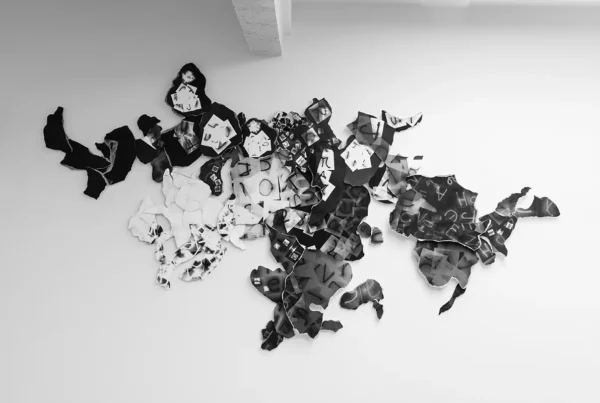“It is the first time I found the gate to enter the art world and find peace in my life.”
The Foundations of a Singular Vision
Emerging from a childhood rooted in a space rich with layered histories, Zaccheo Zhang’s artistic journey was set into motion within the confines of a red brick house in China’s Russian Concession. This architectural gem, later deemed a protected historical site, surrounded her with a symphony of Eastern and Western influences. Her early exposure to cultural relics—facilitated by her mother’s position at a local museum—offered a rare, intimate engagement with artifacts that most only encounter from behind glass. These close encounters not only seeded her enduring fascination with the textures of time but also established a unique visual vocabulary that would later define her artistic voice.
The environments of her formative years fostered a sensitivity to the quiet dialogues between disparate cultures and eras. This sensibility became an inseparable part of her work, allowing her to weave together different worlds in ways that feel both innovative and deeply resonant. As she grew, Zhang’s practice expanded to embrace photography, a medium she sought to redefine within contemporary art, breathing new emotional and philosophical dimensions into its traditional boundaries.
The interplay of personal memory, architectural history, and aesthetic philosophy in Zhang’s upbringing offers an essential lens for understanding her work. Her creative world stands as a testament to how physical spaces and intimate interactions with history can profoundly sculpt an artist’s sense of self and approach to expression.

Zaccheo Zhang: Breathing New Life Into the Photographic Form
Zhang’s work is distinguished by its profound emphasis on the spiritual intersections between the self and the external world. Rather than merely documenting reality, she endeavors to capture its intangible resonances, crafting images that serve as meditative bridges between individuals and their environments. Her post-2022 work has seen a subtle yet pivotal shift, reflecting a heightened engagement with pressing societal issues, particularly the multifaceted pressures women endure within entrenched social structures and the often disorienting experience of cultural displacement.
This evolution signals Zhang’s commitment to making photography a living, questioning medium, capable of grappling with the real conditions of contemporary existence. Her thematic concerns broaden the emotional register of her imagery, inviting viewers to confront personal and collective narratives with fresh vulnerability. Through her lens, the familiar becomes uncanny, and the overlooked gains a potent, almost tactile significance, allowing her to chart new emotional territories within photographic art.
Among her most celebrated works, the series “One Kind of Touch” stands as a cornerstone of her artistic evolution. Launched several years ago, it remains a defining moment in her practice, marking the first instance where she fully recognized the transformative potential of her creative journey. This series does not merely represent technical achievement but embodies a profound personal revelation, offering her a gateway into both the art world and a deeper sense of inner peace.

A Sanctuary for Thoughtful Creation
Within her creative process, Zhang establishes an environment that nurtures focus and deliberate preparation. Music serves as a vital companion in her workspace, providing a sonic backdrop that sharpens her concentration and sustains the rhythm of her intricate artistic rituals. Creating her pieces demands an intensive preparatory phase; she insists on meticulous planning and theoretical groundwork before the physical act of photography begins, ensuring that each image resonates with intentionality and depth.
This devotion to readiness underscores the complexity of her work, revealing it as the product of prolonged reflection rather than spontaneous capture. For Zhang, distraction is not simply an obstacle to productivity but a potential dilution of the emotional and intellectual clarity necessary for her projects. Her approach underscores the discipline required to maintain artistic integrity in an increasingly distracted world, setting her apart from trends favoring immediacy and impulsivity.
Balancing her independent art practice, Zhang works as the creative director for a prestigious New York jewelry company. In this role, she exercises her aesthetic sensibility on a commercial stage, curating the brand’s visual storytelling with a distinctly artistic touch. She likens the experience to managing an ongoing personal project, wherein each campaign and creative decision contributes to a larger narrative arc of growth and transformation. While she also collaborates with galleries, designers, and other companies, Zhang finds the dynamic between short-term and long-term creative projects both enriching and strategically essential for her broader artistic development.

Zaccheo Zhang: Shaping Dreams Into Future Narratives
Looking toward the horizon of her career, Zhang is deeply invested in exploring the nuanced concept of cultural dislocation. She envisions new projects that will interrogate how cultural identities shift, fragment, and reassemble across geographies and histories. However, true to her methodical nature, she emphasizes the necessity of thorough preparation—conducting social research, refining theoretical frameworks, and structuring her ideas rigorously before embarking on new series. This careful gestation period ensures that when the work materializes, it carries the full weight of its conceptual ambition.
Her forward-thinking projects promise to extend the questions she is already asking about belonging, identity, and the invisible pressures of societal expectations. These future explorations are not isolated creative impulses but rather logical continuations of the themes she has long pursued, crafted with even greater precision and emotional acuity. By grounding her future endeavors in serious research and intentionality, Zhang safeguards the emotional resonance and intellectual rigor that define her work.
Throughout her artistic journey, Zhang is deeply aware that her achievements are not hers alone. She openly expresses gratitude to the many individuals who have supported her along the way: her parents, who offered unwavering encouragement; her professors, who provided guidance both inside and outside the academic setting; and the countless friends and collaborators who, whether briefly or for years, contributed to her growth. This spirit of appreciation illuminates Zhang’s understanding that art, like life, is never a solitary endeavor but rather a communal act shaped by countless invisible hands.






